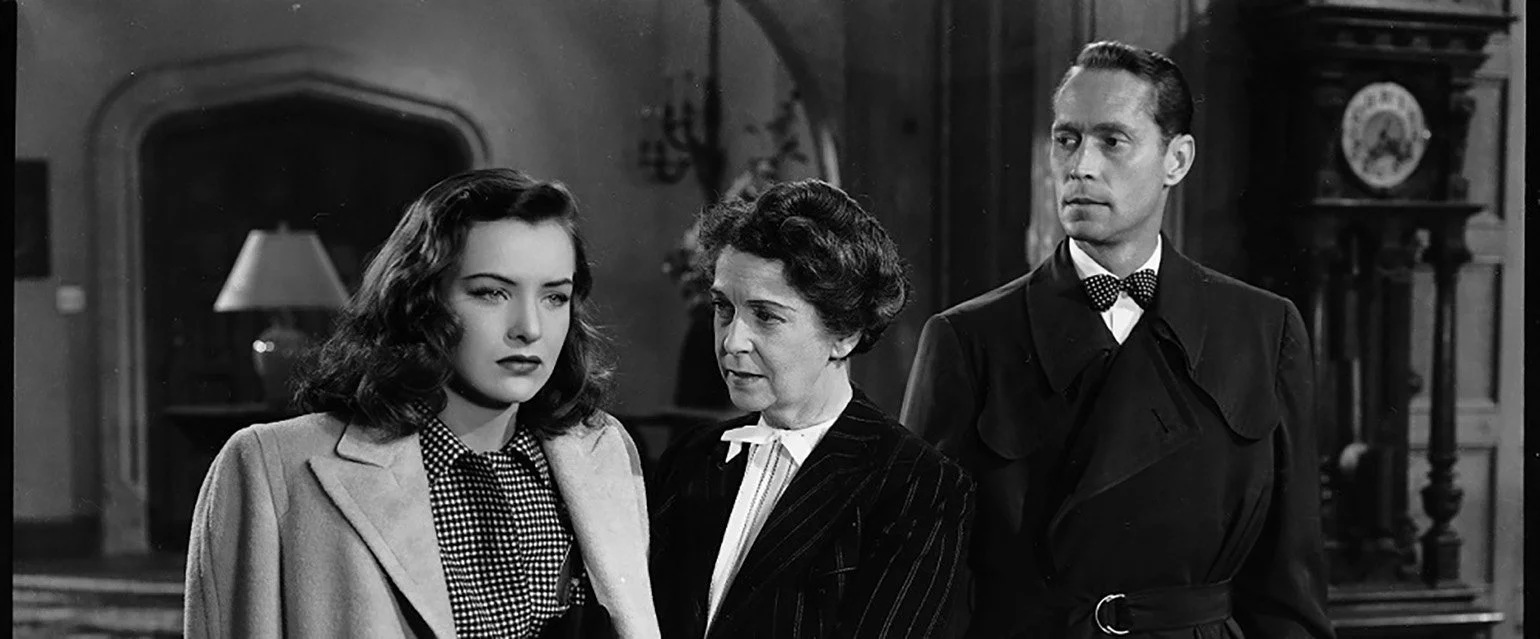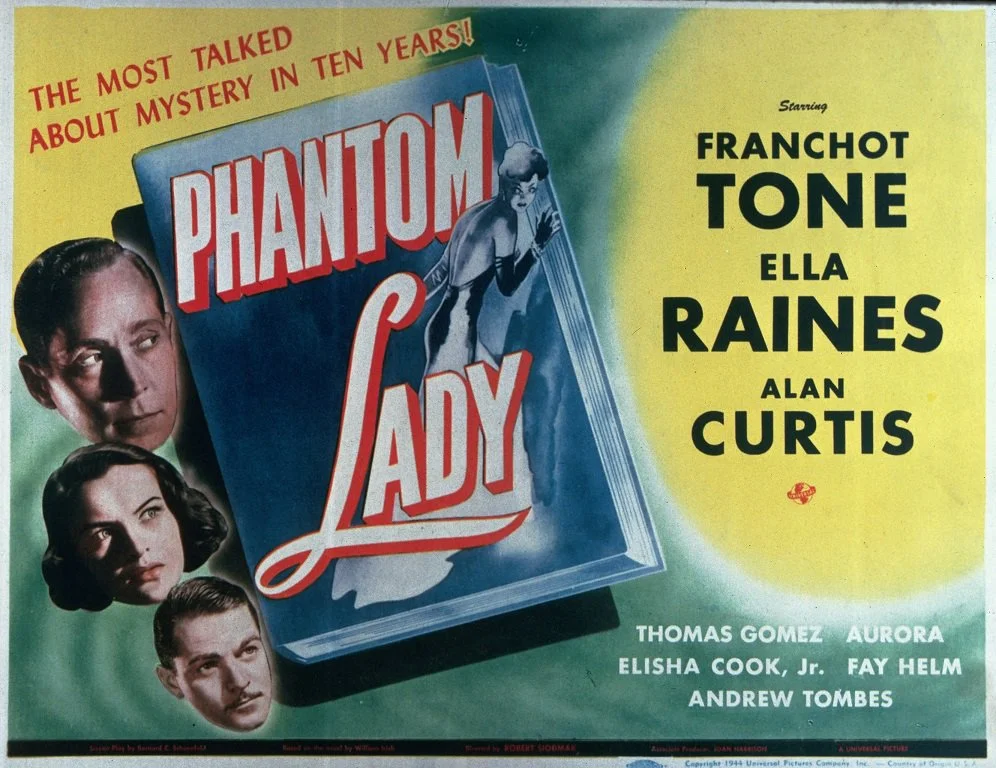1944 / 87 min / b/w
Dir. Robert Siodmak / Scr. Bernard C. Schoenfeld
Cast: Alan Curtis, Ella Raines, Franchot Tone
Adapted from: Phantom Lady (1942) by Cornell Woolrich under pseudonym William Irish
Paris release: Oct. 3, 1946
35mm print courtesy of Universal Pictures
This screening was part of The Inaugural Dr. Saul and Dorothy Kit Film Noir Festival
The Stuff That Dreams Are Made Of: Paris 1946 and American Film Noir
Programmed by Rob King, Film and Media Studies
still from Phantom Lady
Screening was followed by a lecture by Thomas Elsaesser, Film and Media Studies: “Film Noir as the Long Shadow of Weimar Germany: Robert Siodmak’s Phantom Lady and Retroactive Causality”
The connection between German expressionist cinema, Hollywood's German émigré directors, and American film noir has become one of the most common assumptions in film history. Taking the career of one of these émigrés – the one most closely identified with film noir, Robert Siodmak – as an example, Elsaesser showed how this assumption of “influence” relies not only on a problematic notion of history, but – in the case of Siodmak’s possibly most successful film noir, Phantom Lady – also throws into confusion the idea of authorial intentionality, as well as causality and chronology. In short, Elsaesser put Phantom Lady at the center of a phantom (film noir) history.
Thomas Elsaesser is Professor Emeritus at the Department of Media and Culture of the University of Amsterdam. He has authored and edited some twenty volumes on film history, film theory, media archaeology, and new media and installation art. Among his recent books are Film Theory: An Introduction through the Senses (2nd ed., 2015) and Film History as Media Archaeology (2016). He has just completed a book on European Cinema and Continental Philosophy: Film as Thought Experiment (2018). And he is also writer-director of the film The Sun Island, which premiered at the Kassel Documentary Festival last year. Since 2013 he has taught part-time at Columbia University.
About the Dr. Saul and Dorothy Kit Film Noir Festival
Paris 1946. The war is over and American films are once again in Parisian theaters. The French immediately notice a shift in the sensibility of Hollywood’s crime films. They call it noir.
This festival—the first in a ten-year series devoted to the legacy of film noir—returns us to that pivotal moment in film history some seven decades ago. For its inaugural year, the Kit Film Noir Festival will present eight of the films that screened in France that season and inspired the label film noir. Most films will be shown in 35mm.
This festival is funded by a generous gift from alumnus Gordon Kit (Columbia College ’76), in honor of his parents.
For more information, contact filmnoir@columbia.edu




